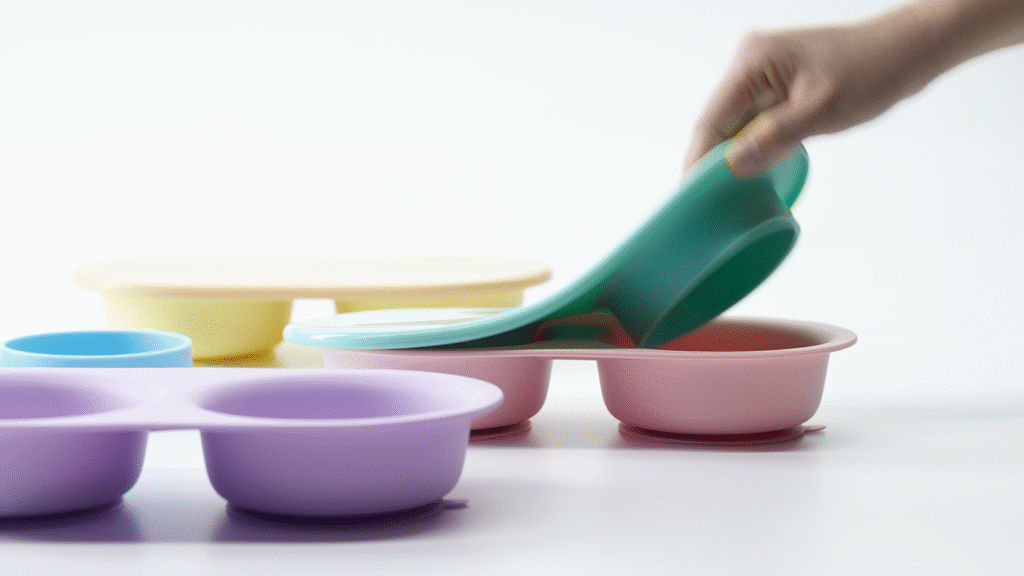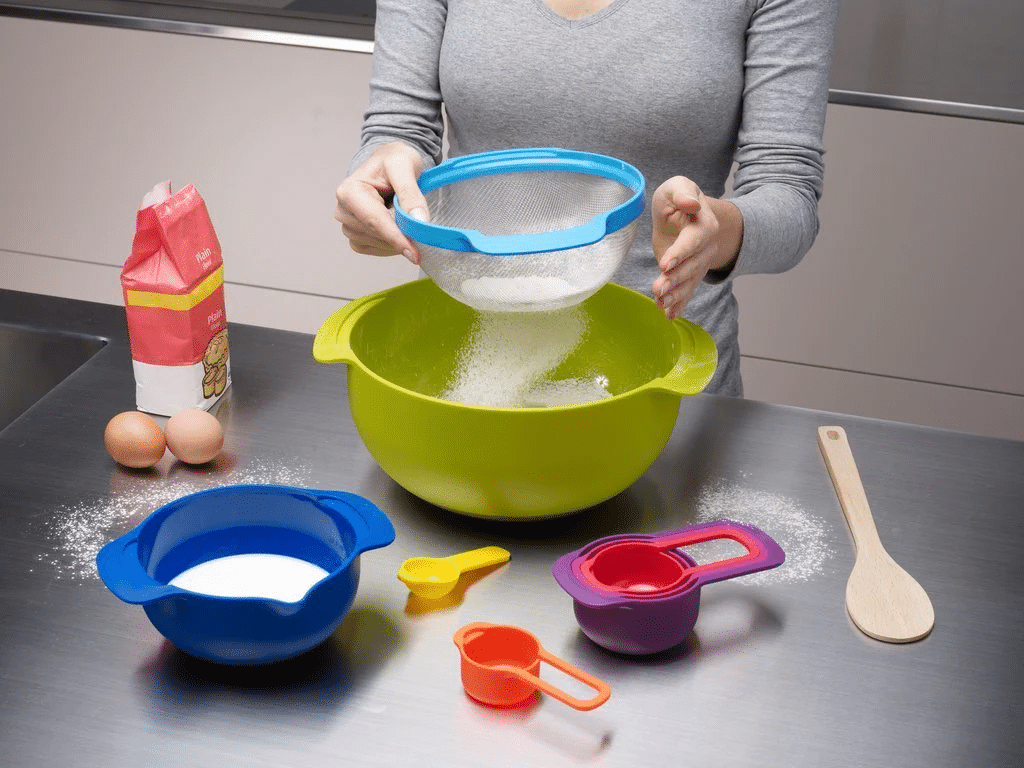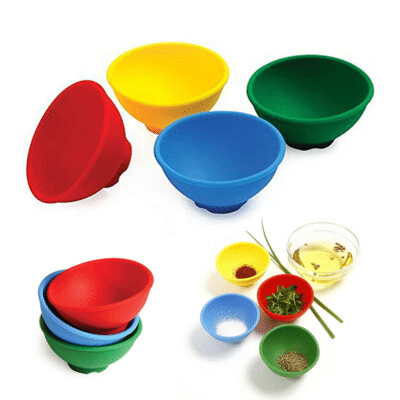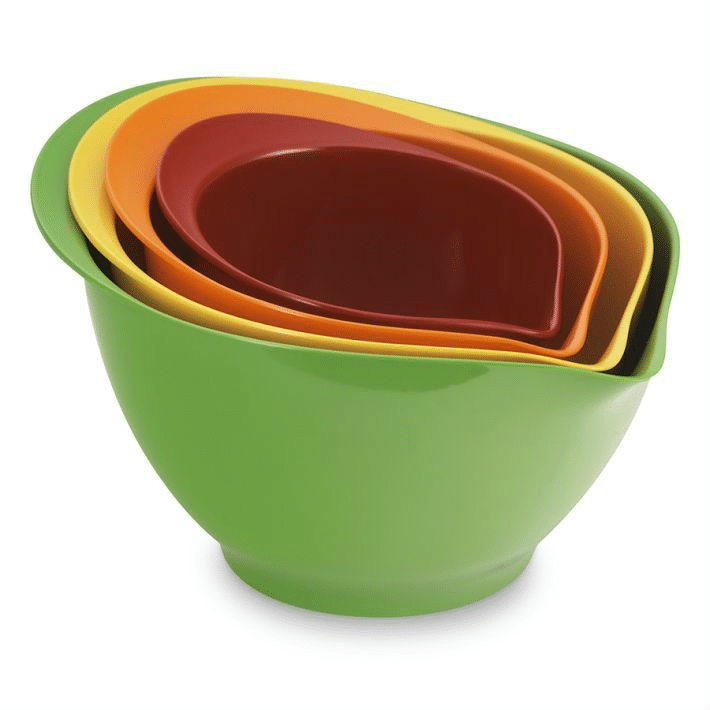
Silicone bowls are a significant advancement in sustainable kitchenware, which is better than plastic and ceramic in terms of sustainability due to their high level of durability, re-usability, and reduced environmental impact in the long term by reducing waste and pollution. In a time and age when 14 million tons of ocean debris every year are caused by single-use plastics (IUCN data), using silicone implies that one takes a material that is non-toxic, long long-lasting, and can be recycled, which does not require a frequent change of use and helps to maintain the cycle of the economy. With global environmental sustainability laws becoming stricter as we enter 2026, and as silicone has more benefits than other materials, why not use it in the home and in a brand? – here are some reasons.
The Sustainability Shift in Kitchenware

Never has the movement toward environmentally friendly kitchenware been more active, a trend pursued both by customers and manufacturers in search of substances that do not affect the environment negatively, but at the same time do not impair the functionality. With more bans on plastics in places such as the EU and California in 2026, alternatives such as silicone come in to reduce the amount of waste, and keep everyday life routine and harmless. Silicone bowls which are sourced using a huge amount of natural silica are unique in that they can be used repeatedly in the microwave, oven and dishwasher without any effects and it is also not maintained by any harmful chemicals. This paper explores their environmental friendliness and compares them with plastic and ceramic, and explains why natural silicone is the healthier choice of the two (whether in manufacturing or disposal).
Why Silicone Is a Greener Material

Silicone has a natural advantage, it is composed of silica, a natural compound that can be found in plenty in sand, unlike plastic, which is based on exhaustible petroleum reserves that cause climate change during mining and refining. Such a foundation makes silicone and plastic comparisons eco-friendly. Stark silicone production results in fewer greenhouse gases and its durability implies that it does not break down to microplastics contaminating waterways and killing wildlife. Silicone is food grade which is certified as being safe, contains no toxic additives common in plastics, and does not leach its contents even when subjected to heat.

Silicone vulcanization is more efficient than that of ceramic, requiring less energy per unit than that needed in firing that involves high temperatures of over 1,000C. Glass bowls are heavy and can easily break, although they can be recycled, which increases the shipping emissions and shard waste. Lightweight properties of silicone can save transportation carbon by up to 30% and its flexible properties can cut down breakage during transportation or use. We have streamlined our operations at Dongguan Haotian Silicone Technology Co., Ltd. to ensure that our kitchenware is eco-friendly and that sustainable kitchenware is not a mere assertion by us but a fact to our customers.
Durability and Reusability: Key to Waste Reduction
Durability is one of the best environmental attributes of silicone, eco friendly silicone bowls can last 5-10 years with care, which is on the other hand, a lot longer than 1-2 years that plastic lasts before cracking or warping under heat. This durability implies that there are fewer bowls in landfills; one silicone bowl can substitute hundreds of plastic ones, which are used in the disposable system, which reduces the amount of waste by a significant margin. The idea of reusability excels in everyday life, such as silicone bowls labelled as being safe in microwaves because of their ability to be repeatedly heated without deterioration, which is not the case with plastic that can melt or release chemical substances after several heating sessions.

Ceramic bowls are also robust, yet brittle which means they have to be replaced frequently due to drops or thermal shocks, which creates production needs and consumption of energy. The same is true of Glass, whose rates of recycling are widely different, only 33 percent are recycled in the United States (EPA). Silicone is flexible, and therefore indestructible in everyday applications, which fosters a culture of buying something and spending as much time as possible without breaking it, which aligns with a zero-waste objective. In the case of Haotian Silicone, customers who light up our bowls as promotional gifts claim more satisfied customers in their line of business as a result of this long-term attribute, which eventually lowers the cost of manufacturing on the environment.
Non-Toxic, BPA-Free, and Safe for Food Contact

Silicone is a non-toxic material that makes it a safer and greener choice than plastic, which may leach bisphenols into food and the environment during heating which might cause water pollution and health hazards. Food-grade silicone, which is FDA and LFGB certified, is subjected to the migration tests to ensure that it is stable and as such is used in sensitive applications such as baby feeding where safety is the key consideration.
Ceramic and glass are non-toxic when of high quality, although the bad glazes on some ceramics may contain lead or cadmium, which prove dangerous when chipped. The petroleum base of plastic makes it dependent on fossil fuels and contributes to climate change whereas silica background of silicone is cleaner and more renewable. This lack of toxicity implies that the product will not cause the environment to be polluted as its life passes through, that silicone is not going to degrade into microplastics like plastic, and it will not harm marine life. At Haotian, our R&D is aimed at platinum-cured formulations that make this safety more effective so that our bowls can contribute to healthier ecosystems.
Silicone vs. Plastic: The Sustainability Comparison

In comparison, silicone outcompetes plastic in all sustainability measures, the trumps made out of plastic create tons of waste (mostly one-time use), most of them face the trash pile or are dumped into oceans (79 percent) (World Bank). The reusability of silicone reduces this by a significant margin; 1 bowl can replace 500+ of the disposable plastic containers. Silicone needs less energy in the long run since fewer remakes, production-wise, and plastic recycling stands at 9 percent around the world; reprocessed silicone can be re-used in dedicated plants, but infrastructure is expanding.
On transport emissions, ceramic loses to silicone, as the weight is lower and causes less carbon to be emitted during shipping, and since it is shatterproof, ceramic does not require waste to be discarded in a breakage item. Recycling of the glass is better (up to 60 percent in certain areas), yet the energy used in production is great. Comprehensively, the long life and stability of silicone give it the more environmentally friendly option as opposed to plastic, which requires the repeatedly used make-use-dispose cycle in the kitchens that are dominated by plastics.
Eco-Friendly Manufacturing and Certifications

Green fabrics Responsible manufacturing enhances the green properties of silicone, which is energy efficient in its vulcanization at Haotian Silicone and is green and closed loop, to ensure water is recycled and to reduce emission, which is in line with our ISO14001 certification of environmental management. Our primary concern is food grade raw materials, and we do not use volatile compounds, which might pollute the air and our processes produce 90 percent less waste compared to the conventional plastic molding.
Such certifications as FDA and LFGB guarantee not only the safety but also the sustainability since these certifications imply traceable materials with low impact. In the case of brands this translates to the production of environmentally friendly products which are of global standard, thereby minimizing their carbon footprint. This is further reduction of waste through our invention patent of multi-color molding which integrates designs seamlessly making green manufacturing viable and profitable.
Real-World Uses: How Eco-Conscious Consumers Choose Silicone Bowls
Green families also replace plastic with silicone bowls when making meals because of their stacking property that conserves space and helps to avoid clutter. Parents use them instead of ceramic because they are unbreakable which provides safety and can be easily sterilized which helps reduce the number of replacements, especially in the case of baby feeding. Did other brands such as eco-oriented meal kit services reuse their products using silicone reusable packaging, which reduces the amount of single-use waste and prolongs the life of their products.
Lightweight silicone bowls take the place of delicate glass in picnics in the outdoor environment, which contributes to zero-waste lifestyles. They are used in branded freebies by food companies, which ensures sustainability and promotes the quality of LFGB. These applications underline the applicability of silicone in promoting greener living, which minimizes the overall environmental burden in life.
Conclusion — A Smart, Sustainable Choice for 2026
The bowls are made out of silicone and represent the future of environmentally friendly kitchenware: they are robust, safe and use minimal harm, since they can be reused and made of low impact materials. You are investing in a more environmentally-friendly kitchen that will endure by using them as an alternative to plastic or ceramic. Silicone is not merely convenient when it comes to sustainable decisions to the best custom silicone bowl, but it is a move towards responsibility.